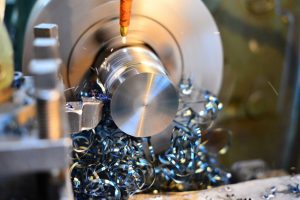In the realm of optical technology, the right material is the cornerstone upon which successful design and manufacturing rest. The evolution of optical devices from lenses to complex imaging systems relies on meticulous material selection strategies that balance performance, manufacturability, and cost-effectiveness. The Role of Materials in Optical Design Optical systems demand materials that cater
In the realm of optical technology, the right material is the cornerstone upon which successful design and manufacturing rest. The evolution of optical devices from lenses to complex imaging systems relies on meticulous material selection strategies that balance performance, manufacturability, and cost-effectiveness.
The Role of Materials in Optical Design
Optical systems demand materials that cater to diverse functions. The choice of substrate, coating, and structural elements significantly influences the device’s performance. For instance, the refractive index, dispersion characteristics, and transmission properties dictate how light interacts within the system.
Balancing Performance and Practicality
The substrate forms the foundation of optical devices. Glass has long been a stalwart due to its exceptional optical clarity and stability. However, emerging materials like polymers and engineered ceramics present compelling alternatives. Polymers offer flexibility, lightweight attributes, and cost-effectiveness, while ceramics provide durability and thermal stability.

Image By:https://www.sculpteo.com
Enhancing Optical Efficiency
Coatings play a pivotal role in optimizing optical performance. Anti-reflective coatings, for instance, reduce glare and enhance light transmission. Here, nanomaterials exhibit promise, enabling ultra-thin, high-performance coatings with tailored properties. Thin-film interference coatings have transformed optical systems, offering precise control over light interactions.
Challenges and Solutions
The transition from design conceptualization to manufacturing execution often encounters hurdles. Material properties deemed advantageous during design might pose challenges in large-scale manufacturing. Bridging this gap requires a holistic approach that considers both design aspirations and manufacturing feasibility.
Tackling Material Variability
Materials, especially those sourced from natural elements, can exhibit variability in properties. Ensuring consistency across batches is crucial for reproducibility and reliability. Advanced characterization techniques coupled with stringent quality control protocols help mitigate this variability, ensuring uniformity in manufactured optical components.

Image By:https://sybridge.com
Design Optimization for Manufacturing Efficiency
Design intricacies might inadvertently complicate the manufacturing process. Simplifying designs without compromising optical performance is a delicate balancing act. Computer-aided design (CAD) tools and simulation software aid in optimizing designs for manufacturability. Moreover, leveraging additive manufacturing techniques enables the creation of complex, previously unattainable geometries.
Innovations and Beyond
The trajectory of material selection in optical technology is poised for groundbreaking advancements. The advent of metamaterials, engineered to exhibit properties unattainable in natural materials, promises radical shifts in optical device design. Metamaterials offer unprecedented control over light manipulation, paving the way for compact, high-performance optical systems.
Aligning Innovation with Environmental Responsibility
As technological strides continue, the quest for sustainable materials gains prominence. Materials sourced from renewable resources and those conducive to recycling and reusability align with global sustainability goals. Optics, historically energy-intensive in manufacturing, can benefit from eco-friendly materials and greener production methods.
Conclusion
The symbiotic relationship between material selection, design optimization, and manufacturing prowess forms the bedrock of advancements in optical technology. As we navigate the landscape of ever-evolving materials, strategic choices that harmonize performance, manufacturability, and sustainability will drive the next wave of innovations in optical devices.

















Leave a Comment
Your email address will not be published. Required fields are marked with *